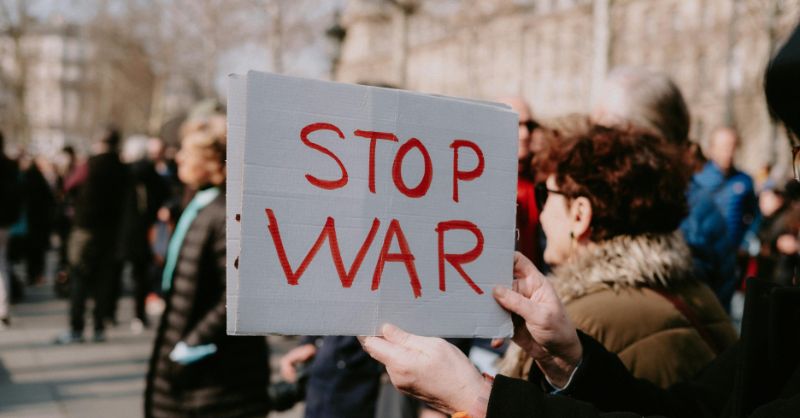
What began as a simmering regional dispute has escalated into one of the most consequential conflicts of the 21st century. The Russia-Ukraine war has shaken the global order, redrawn alliances, and inflicted immeasurable human suffering.
Its impact extends beyond the battlefield, disrupting global economies, politics, and daily lives. From the war’s origins to personal stories of survival, this is an in-depth look at the crisis that continues to unfold.
Why Is the war taking place?
The roots of the Russia-Ukraine conflict run deep, interwoven with history, geopolitics, and national identity. Ukraine, once a Soviet republic, has long been a buffer zone between Russia and the West. After gaining independence in 1991, Ukraine faced a dilemma: should it lean toward the European Union and NATO or maintain close ties with Russia?
In 2014, the Euromaidan protests toppled Ukraine’s pro-Russian President Viktor Yanukovych, paving the way for a government seeking closer integration with Europe. Russia responded by annexing Crimea, a move widely condemned as a violation of international law. Simultaneously, pro-Russian separatist movements in Ukraine’s eastern Donetsk and Luhansk regions led to a simmering conflict.
The current war erupted in February 2022 when Russian President Vladimir Putin launched what he called a “special military operation.” Putin claimed NATO’s eastward expansion and alleged discrimination against Russian-speaking Ukrainians necessitated the invasion. However, Ukraine and its allies viewed this as an unprovoked act of aggression aimed at subjugating an independent nation.
Global alliances in the war
The war has polarized the world, creating distinct alliances while leaving some nations unaligned. Ukraine has garnered significant support from Western nations. The United States and its NATO allies have been its primary backers, supplying billions of dollars in advanced military equipment, including HIMARS rocket systems and modern tanks. European countries have also provided extensive humanitarian aid and accepted millions of Ukrainian refugees.
Russia, on the other hand, has found support in Belarus, which has allowed its territory to serve as a staging ground for Russian troops. Other allies include Iran, accused of supplying drones used in Russian airstrikes, and North Korea, which reportedly provides artillery shells. While nations like China and India officially maintain neutrality, their ongoing trade with Russia, particularly in energy, has been critical in sustaining Moscow’s economy.
Many countries, especially in the Global South, have avoided taking sides. Turkey, a NATO member, has balanced its stance by mediating peace talks while supplying drones to Ukraine. Nations across Africa, Asia, and Latin America often cite economic dependencies or the desire to remain neutral in a great-power conflict.
Economic sanctions that are squeezing Russia
In response to the invasion, Western nations imposed sweeping economic sanctions to cripple Russia’s economy. Among the most significant measures was Russia’s removal from the SWIFT banking system, severely limiting its ability to conduct international transactions.
Energy sanctions followed, including an EU embargo on Russian oil and gas imports and a G7 price cap on Russian crude. The freezing of assets belonging to Russian oligarchs and restrictions on high-tech exports further aimed to weaken Moscow’s military capabilities.
While these sanctions have inflicted considerable economic pain, their effectiveness remains debated. Russia’s GDP contracted by 2.1% in 2022, and inflation surged, but high energy prices and trade with China and India have bolstered its resilience.
Critics argue that sanctions have also driven up global food and energy prices, disproportionately impacting developing nations. Some analysts predict that while the immediate impact on Russia has been limited, the long-term consequences could erode its economic and military strength.
The current state of the war
As of late 2024, the war has settled into a grueling stalemate. Eastern Ukraine remains the epicenter of intense fighting, with Russia fortifying its positions in Donetsk and Luhansk. Ukraine, bolstered by Western arms, has launched counteroffensives and regained some territory, including critical areas in Zaporizhzhia. However, logistical challenges and harsh winter conditions have slowed progress.
Russian missile and drone strikes continue to target Ukrainian cities, devastating power grids and civilian infrastructure. Ukraine has also ramped up resistance efforts, reportedly conducting sabotage operations within Russian territory, though these claims remain contested.
Lives lost: The human toll
The war’s human cost is staggering. Ukraine has suffered more than 100,000 military casualties, with civilian deaths exceeding 20,000. The destruction of homes, schools, and hospitals has displaced millions, creating the largest refugee crisis in Europe since World War II. Over eight million Ukrainians have fled to neighboring countries, while millions more remain internally displaced.
Russia, too, has faced significant losses. Independent estimates suggest over 120,000 Russian soldiers have been killed or injured, with additional casualties among Wagner Group mercenaries. Morale within Russian forces is reportedly low, compounded by logistical failures and reports of poor treatment of conscripts.
What do we think about the war
The Russia-Ukraine war is more than a regional conflict; it is a battle of ideologies, sovereignty, and global norms. The outcomes of this war will define the geopolitical landscape for decades to come. While governments and analysts grapple with strategies and policies, the lives of millions hang in the balance. Amid the devastation, stories of resilience and defiance remind us of the human spirit’s capacity to endure even in the most challenging times.
The war continues to evolve, but one thing is certain: its impact will be felt far beyond the borders of Russia and Ukraine, shaping the future of global politics and humanity itself.




1 thought on “Unravelling Russia-Ukraine war: Its conflict, alliances, and lives lost ”